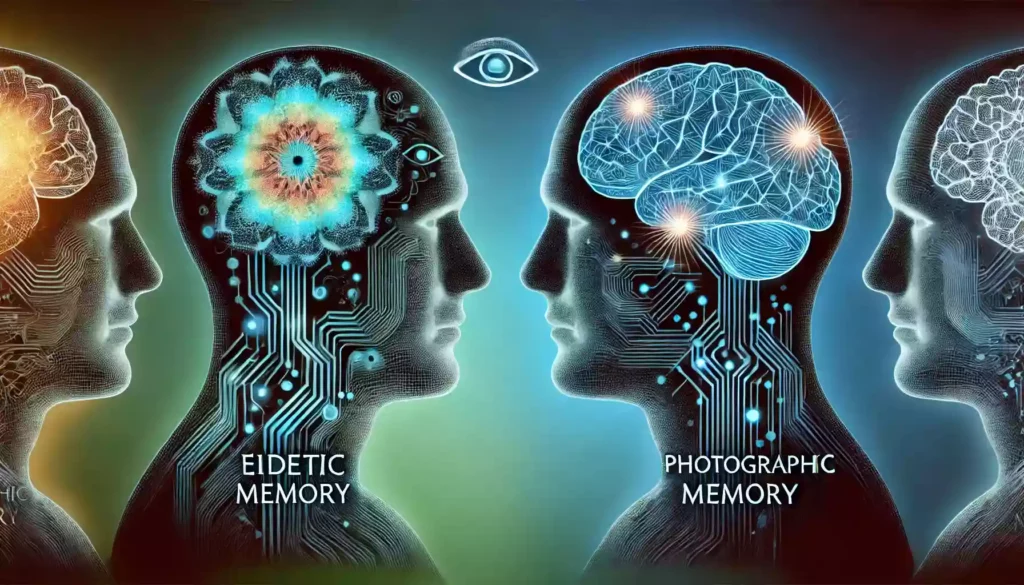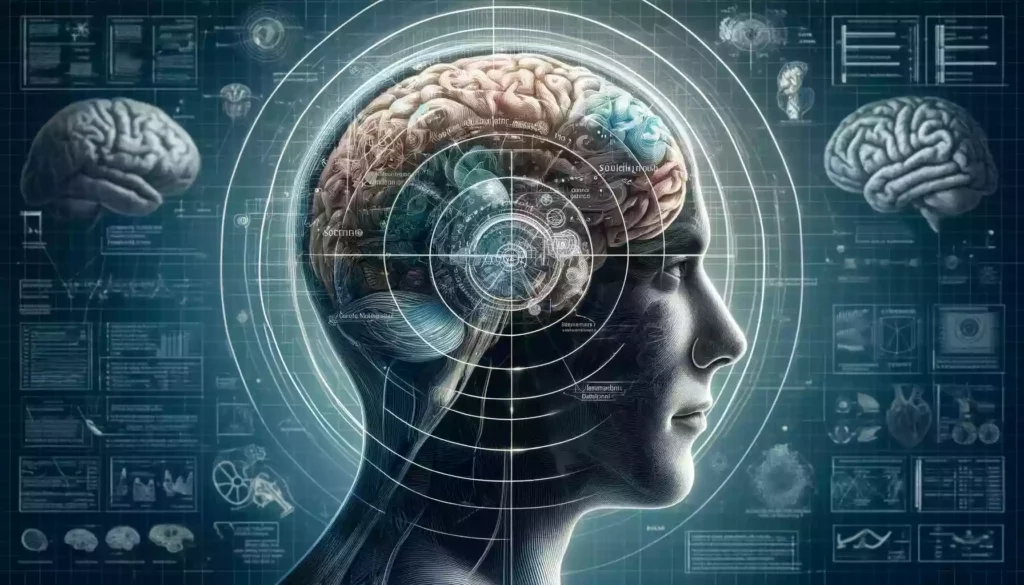Key Takeaways:
- Understanding eidetic memory
- Differences from photographic memory
- Famous eidetic individuals
- Scientific explanations
- Mental health impacts
What is Eidetic Memory?
Eidetic memory, often referred to as photographic memory, is the ability to recall images, sounds, or objects in incredible detail after only a few instances of exposure. This phenomenon is more commonly observed in children and tends to fade as one grows older. The vividness and accuracy of these memories can be astonishing, allowing individuals to remember intricate details with remarkable clarity.
Renowned cognitive psychologist Dr. Elizabeth Loftus explains, “Eidetic memory is like having a high-resolution photograph in your mind, capturing details that most people would overlook.” This unique ability can be both a gift and a challenge, as it can lead to sensory overload and difficulties in distinguishing important details from trivial ones.
How Common is Eidetic Memory?
The prevalence of true eidetic memory is quite rare. Studies suggest that a very small percentage of the population possesses this extraordinary capability. Most commonly found in children, eidetic memory tends to diminish with age. Research by psychologist Ralph Haber indicates that only about 2-10% of children exhibit eidetic memory, and even fewer adults retain this ability.
This rarity makes eidetic memory a fascinating subject for scientific study and public intrigue. Despite its scarcity, the concept of eidetic memory continues to captivate our imagination, as we wonder about the potential locked within the human mind.
Eidetic Memory vs. Photographic Memory

Many people use the terms eidetic memory and photographic memory interchangeably, but there are distinct differences between the two. Eidetic memory refers to the ability to recall images with high precision after only a few instances of exposure, typically found in children. Photographic memory, on the other hand, suggests an even more extraordinary ability to remember pages of text, numbers, or other information as if one had taken a photograph of it. This term is often exaggerated in popular culture and lacks substantial scientific evidence supporting its existence.
Dr. Marvin Minsky, an American cognitive scientist, once stated, “Photographic memory is a myth. What people refer to as photographic memory is often just well-developed memory skills.” While eidetic memory has been observed and documented, photographic memory remains more of a speculative concept. Understanding this distinction helps us appreciate the genuine rarity and capabilities of true eidetic memory.
Famous People with Eidetic Memory
Throughout history, there have been numerous claims of individuals possessing eidetic memory. One of the most famous cases is that of Nikola Tesla, the brilliant inventor, who was said to have an extraordinary ability to visualize and recall detailed images of his inventions. Another notable figure is Leonardo da Vinci, whose detailed sketches and notes demonstrate an incredible memory for visual details.
Modern examples include chess grandmaster Bobby Fischer, known for his ability to recall intricate details of games played years prior. Similarly, actress Marilu Henner has publicly discussed her highly superior autobiographical memory (HSAM), which allows her to recall specific details from nearly every day of her life.
These individuals exemplify the profound impact eidetic memory can have on one's life and career, showcasing how this rare ability can be harnessed to achieve remarkable feats.
The Science Behind Eidetic Memory

The science behind eidetic memory involves a complex interplay between various regions of the brain. Researchers have identified the posterior parietal cortex as a critical area for processing and recalling visual information. This region is responsible for integrating sensory input and creating a vivid mental image. Neuroimaging studies have shown that individuals with eidetic memory exhibit heightened activity in this area when recalling images.
Dr. Julia Shaw, a cognitive neuroscientist, explains, “Eidetic memory likely involves a unique neural mechanism that allows for the extraordinary retention of visual details.” Additionally, the hippocampus, known for its role in memory formation and retrieval, works in conjunction with the visual cortex to store and recall these detailed images. Understanding these brain processes helps demystify the phenomenon and highlights the remarkable capabilities of the human mind.
Can You Develop Eidetic Memory?
The idea of developing eidetic memory is intriguing, but the reality is more nuanced. While some techniques can enhance memory skills, true eidetic memory is believed to be an innate ability that cannot be fully cultivated through practice alone. Memory training exercises, such as mnemonic devices and visualization techniques, can improve general memory performance but may not lead to genuine eidetic recall.
Renowned memory expert Dr. Boris Konrad suggests, “While we can train our memory to be more effective, achieving true eidetic memory is not something that can be learned.” This perspective is echoed by various studies indicating that while memory can be enhanced, the specific neural mechanisms underpinning eidetic memory are unique and likely genetic.
However, exploring and practicing memory techniques can still provide significant benefits. Enhanced memory skills can aid in academic and professional settings, making it a worthwhile endeavor for those seeking to improve their cognitive abilities.
Eidetic Memory in Children
Eidetic memory is most commonly observed in children, with a significantly higher prevalence than in adults. This ability typically manifests around the age of four to six and tends to diminish as the child grows older. Researchers believe that the developmental stage of the brain during childhood is particularly conducive to retaining vivid and detailed images.
Dr. Alan Searleman, a professor of psychology, notes, “Children are more likely to have eidetic memory due to their heightened capacity for visual processing and memory retention.” This stage of brain development allows them to capture and recall intricate details that adults may overlook. However, as cognitive development progresses, the ability to retain such detailed images often fades.
While some children may retain elements of this ability into adulthood, the majority will experience a decrease in eidetic recall. Understanding this phenomenon in children offers insights into the developmental aspects of memory and the brain's remarkable adaptability.
Challenges of Having Eidetic Memory
Having eidetic memory, while fascinating, comes with its own set of challenges. Individuals with this ability often face sensory overload, as their brains continuously process and store an overwhelming amount of visual information. This can lead to difficulties in focusing on essential details and filtering out irrelevant information.
In addition, the constant influx of vivid memories can be mentally exhausting and may impact one's ability to relax or unwind. For instance, remembering every detail of a distressing event can lead to heightened stress and anxiety. Dr. Oliver Sacks, a renowned neurologist, highlighted in his works how extraordinary memory abilities could sometimes become a burden rather than a gift.
Despite these challenges, many individuals with eidetic memory find ways to harness their unique ability effectively. Developing coping strategies and seeking support from mental health professionals can help manage the potential downsides, allowing them to leverage their remarkable memory for personal and professional success.
Eidetic Memory and Mental Health
The intersection of eidetic memory and mental health is a complex and multifaceted topic. While having an exceptional memory can be advantageous, it also poses unique mental health challenges. The constant recall of detailed and vivid memories can lead to increased anxiety, stress, and even depression, especially if the individual frequently recalls traumatic or distressing events.
Dr. Oliver Sacks, in his book Hallucinations, discusses the double-edged sword of having such a memory, noting, “The extraordinary ability to remember every detail can sometimes make it difficult to move past negative experiences, trapping individuals in a cycle of vivid recollection.” This perpetual loop can be mentally exhausting and emotionally draining.
Moreover, the sensory overload experienced by individuals with eidetic memory can lead to difficulties in concentrating and prioritizing tasks. The brain's constant processing of visual information can interfere with daily functioning and overall well-being. However, with proper support and coping mechanisms, individuals can learn to manage these challenges effectively.
Seeking help from mental health professionals, practicing mindfulness, and engaging in activities that promote relaxation and mental clarity can significantly improve the quality of life for those with eidetic memory. Understanding the balance between utilizing this remarkable ability and maintaining mental health is crucial for long-term well-being.
Recommended Resources
- Hallucinations by Oliver Sacks
- Moonwalking with Einstein: The Art and Science of Remembering Everything by Joshua Foer
- The Mind's Eye by Oliver Sacks

.thumb.jpg.2d93ce2472f26b01a1e185382ba0b64e.jpg)



Recommended Comments
There are no comments to display.
Create an account or sign in to comment
You need to be a member in order to leave a comment
Create an account
Sign up for a new account in our community. It's easy!
Register a new accountSign in
Already have an account? Sign in here.
Sign In Now